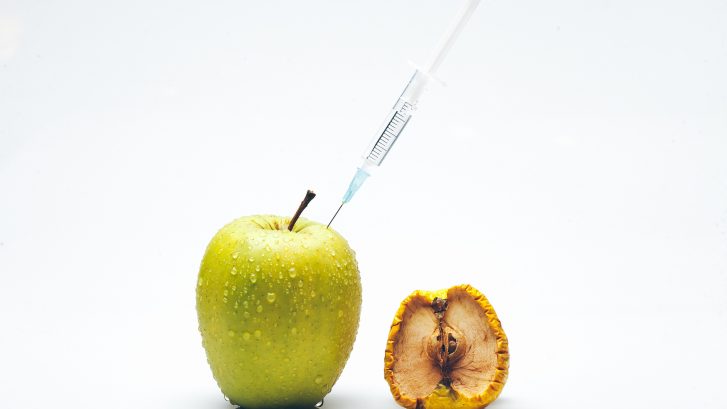Surprising Applications of Botox
Ever since its FDA approval back in 2002, Botox has been the go-to injection for people looking to unfurl their wrinkles and eradicate their crow’s feet. But its effectiveness goes beyond the brow; Allergan (the pharmaceutical company that holds the patent on Botox) sees hundreds of potential uses for the wonder drug.
ADDITIONAL COSMETIC APPLICATIONS
Botox immobilizes certain muscles that lead to age lines in the brow, but this functionality can also help reverse several other facial abnormalities.
- Cleft Lips – Over 4,000 babies are born with cleft palates and/or lips annually. By introducing Botox to the affected area, doctors can alleviate the scarring process by allowing the afflicted muscles to heal.
- Facial Tics – Similarly, a small dose of Botox can reduce the facial spasms that lead to nervous ticks, delivering relief to its recipient.
- Crossed Eyes – The FDA has also approved Botox to help the approximately 4% of Americans who suffer from a condition called Strabismus or crossed eyes. The injection helps relax the surrounding tissue so the eyes can properly line up without stressing the muscles.
- Jaw and Lip Musculature – A strong jaw can have its benefits, but it may result in a silhouette that looks bulky and misshapen. By injecting these muscles with Botox, you can relax the face and slim down the profile. Also, injections into a “short lip” can help relax it and cover up what is perceived to be a “gummy smile”.
NO PAIN, YOUR GAIN
If you are experiencing chronic pain, be sure to consult a medical professional right away. You may be surprised at his/her diagnosis: Botox. This serum was discovered to be an effective treatment for migraine headaches all the way back in 1992 by a pioneer named Dr. William Binder. It took the FDA almost two decades to catch up, but they finally approved the use of Botox to alleviate migraines in 2010. The procedure involves approximately 30 injections around the head and neck and its benefits last for up to three months.
But headaches aren’t the only pains that can be treated with Botox. Lower back spasms may be reduced with these injections, as can mogigraphia, commonly known as writer’s cramp. The repetitive use of the hand and forearm creates tension in the muscles, but Botox can relax this region and bring relief to the suffering scribe.
Botox is also useful to patients suffering from coldness or tremors in their extremities. Patients could use the injections to counteract their painful esophagus spasms during the process of digestion.
PROFUSE SWEATING
One unexpected by-product of Botox injections is the reduction in perspiration. When doctors began noticing this trend, they started treating patients with severe primary axillary hyperhidrosis, aka profuse underarm sweat, with the aforementioned serum.
BLADDER CONTROL
For people suffering from OAB (overactive bladder), Botox presents a source of relief. A series of targeted injections can relax the spasms of the bladder, providing a treatment for incontinence, especially in patients recovering from spinal cord damage.
PARKINSON’S AND A.L.S.
Neurodegenerative disorders such as Parkinson’s disease and Amyotrophic Lateral Sclerosis (A.L.S., also commonly referred to as Lou Gehrig’s disease) sometimes trigger excessive drooling by those afflicted. Botox can help curb the salivation process and help restore the patient’s facial control temporarily.
ANAL FISSURES
When the human sphincter spasms excessively, it can overexert the tissue of the rectum. This often leads to anal fissures: painful tearing of the internal rectal walls. Traditional treatment of anal fissures involves nitroglycerin ointment or surgery, but Botox presents a less invasive (and often more effective) third option. By relaxing the sphincter, the fissures are allowed to heal organically.
HEART RATE
One possible future application of Botox injections could be seen in the realm of heart surgery outpatient programs. After enduring an open-heart procedure, some patients suffer from atrial fibrillation or an abnormal heartbeat. Botox could help regulate these palpitations when the heart is at its most vulnerable, giving the subject a much-needed boost on the road to recovery.
SEXUAL DYSFUNCTION
Another experimental use of Botox involves the treatment of premature ejaculation. By injecting the penis, the surrounding tissue relaxes and delays the subject’s urge to climax. The same material could also aid in female patients who suffer from pain during intercourse. Botox can reduce the spasms in a woman’s pelvic floor, which can lead to discomfort when overactive and/or pronounced.
EMOTIONAL BENEFITS
There is a burgeoning theory in some medical circles called the facial feedback hypothesis. This is the idea that Botox can make a patient look happier, which in turn can actually make them feel happier. It’s impossible to accurately quantify joy or sadness, but we have been trying for millennia. That’s why such clichés as “mind over matter” and “put on a happy face” have endured for so long. Perhaps there is some validity to the psychological benefits of using Botox to battle depression, but the statistical data is still inconclusive.
For more information on the benefits of Botox, consult a true maverick in the field: Dr. William Binder. His friendly and helpful staff can schedule a consultation to discuss your specific needs and guide you forward in your quest for a healthier, happier you.

